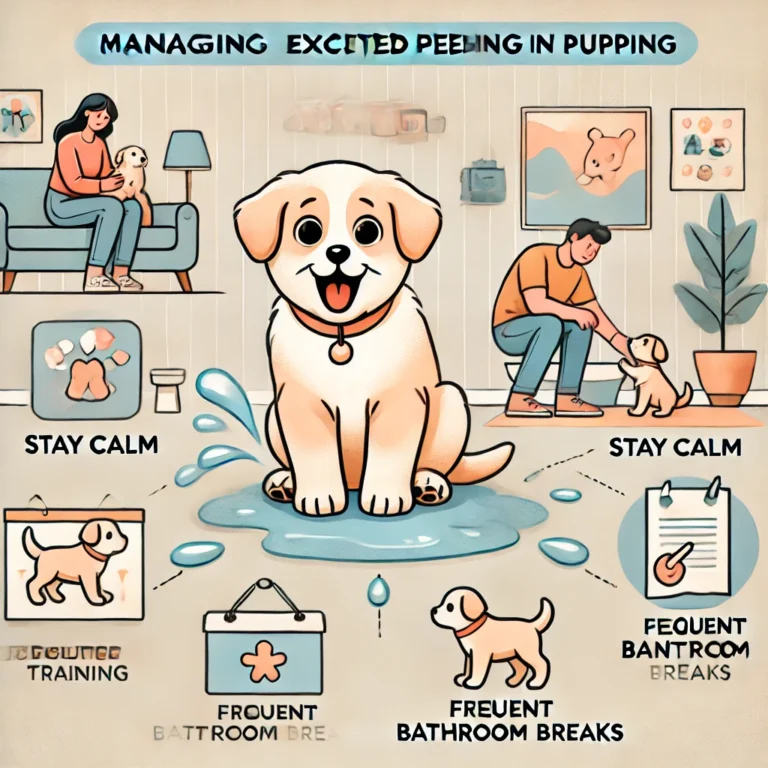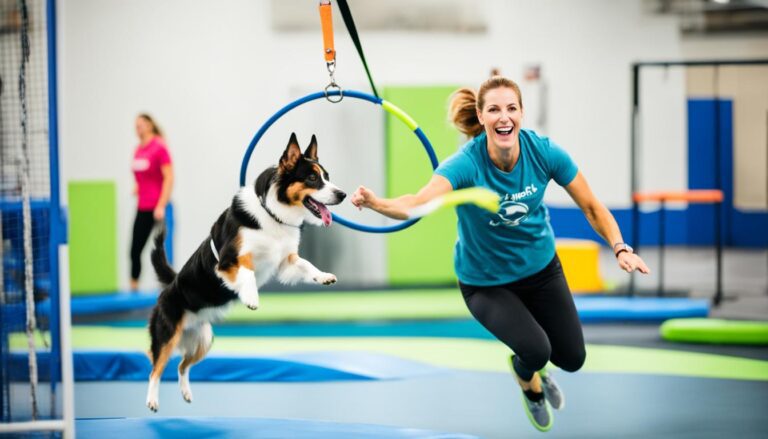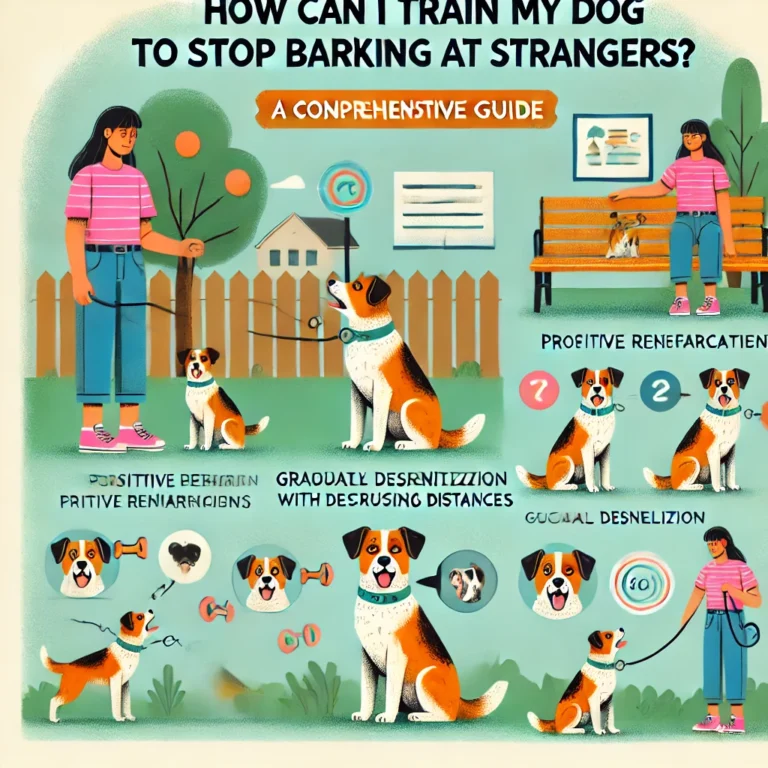Dog Separation Anxiety Training: Effective Techniques for Canine Comfort
Dog separation anxiety can be a challenging issue for pet owners. Many dogs become stressed or anxious when left alone, leading to destructive behaviors and distress.
We understand how difficult this can be for both dogs and their humans.

Training can help dogs feel more comfortable when separated from their owners. This process involves gradually getting dogs used to being alone and teaching them that it’s safe and okay.
We’ll explore some effective methods to help your furry friend cope better with time apart.
Consistency and patience are key in addressing separation anxiety. By using positive reinforcement and creating a calm environment, we can help our dogs build confidence and reduce their fear of being alone.
With time and effort, many dogs can learn to relax and feel secure even when their owners are away.
Key Takeaways
- Separation anxiety in dogs can be improved through gradual training and positive reinforcement.
- Creating a calm environment and consistent routines helps dogs feel more secure when alone.
- Professional help may be needed for severe cases of canine separation anxiety.
Understanding Separation Anxiety

Separation anxiety is a normal part of child development. It can cause worry and distress in children when they’re apart from their parents or caregivers.
We’ll explore how to recognize this condition and its impact on different age groups.
Differentiating Normal Anxiety from Separation Anxiety Disorder
Normal anxiety about separation is common in young children. It usually starts around 6-8 months and can last until age 3. Separation Anxiety Disorder is more severe and long-lasting.
We see this disorder when a child’s anxiety:
- Is excessive for their age
- Lasts for weeks or months
- Interferes with daily life
Signs of the disorder may include:
- Extreme distress when separated
- Constant worry about losing a parent
- Refusal to go to school
- Physical symptoms like stomachaches
If these symptoms persist, it’s important to consult a pediatrician. They can help determine if the anxiety is normal or needs treatment.
Recognizing Signs and Symptoms in Children
Children with separation anxiety may show various signs. These can be emotional, behavioral, or physical.
Common symptoms include:
- Clinginess to parents or caregivers
- Tantrums or crying when separated
- Difficulty sleeping alone
- Nightmares about separation
- Refusal to attend school or social events
Physical symptoms may also occur:
- Headaches
- Stomachaches
- Nausea
- Vomiting
These signs often appear before or during separation. They can cause significant distress for both the child and family.
It’s crucial to address these symptoms early to prevent them from worsening.
Exploring the Development of Separation Anxiety in Infants and Toddlers
Separation anxiety typically begins in infancy. It’s a normal part of development as babies learn to distinguish familiar faces from strangers. Key stages include:
6-8 months: Infants may become upset when separated from parents.
1-2 years: Toddlers often experience peak separation anxiety. They may cry, cling, or throw tantrums when parents leave.
2-3 years: Anxiety usually decreases as children develop better communication skills and understand that parents will return.
Separation anxiety in toddlers can be eased by:
- Practicing short separations
- Creating goodbye routines
- Offering comfort objects
- Returning at promised times
We should remember that each child develops at their own pace. Some may experience more intense or prolonged anxiety than others.
Building Effective Routines

Establishing consistent routines is crucial for managing dog separation anxiety. We’ll explore key strategies to create stability and comfort for anxious dogs.
Sleep Training and Bedtime Routines
Sleep training plays a vital role in reducing separation anxiety. We recommend setting a consistent bedtime routine to help your dog feel secure.
This may include a short walk, calm playtime, and a comfortable sleeping area.
Create a relaxing environment by dimming lights and using soft music. Provide a cozy bed or crate where your dog feels safe.
We suggest using a special toy or blanket that smells like you for comfort.
Gradually increase the time your dog spends alone at night. Start with short periods and slowly extend them. Reward calm behavior with treats and praise.
Creating a Supportive Daytime Environment
A structured daily routine helps anxious dogs feel more secure. We advise setting regular times for meals, walks, and play.
This consistency builds trust and reduces uncertainty.
Provide engaging toys and puzzles to keep your dog occupied when alone. Rotate toys to maintain interest.
Consider using calming aids like pheromone diffusers or anxiety wraps.
Create a safe space where your dog can retreat when feeling overwhelmed. This area should be quiet and comfortable.
We recommend using it during alone time to build positive associations.
Consistent Rituals and Caretaking Practices
Develop rituals for departures and arrivals to ease transitions. We suggest keeping goodbyes brief and low-key.
Upon return, greet your dog calmly to avoid reinforcing anxious behavior.
Use a specific phrase or action before leaving to signal your return. This helps your dog understand you’ll come back.
Practice short departures frequently to build confidence.
Gradually increase alone time, starting with just a few minutes. Return before your dog becomes distressed.
We recommend using positive reinforcement to reward calm behavior during separations.
Consider doggy daycare or a pet sitter for longer absences. This provides socialization and reduces time alone.
Choose caregivers who understand separation anxiety and can maintain your dog’s routine.
Approaches to Managing and Treating Separation Anxiety
Separation anxiety can be managed through various methods. We’ll explore key strategies that can help both children and adults cope with this challenging condition.
Positive Reinforcement Techniques
Positive reinforcement is a powerful tool in managing separation anxiety. We encourage praising and rewarding calm behavior when separating.
This helps build confidence and trust.
Small steps are crucial. We start with brief separations and gradually increase the time apart. This allows the person to adjust slowly.
Creating a positive goodbye routine can be helpful. We might use a special handshake or phrase.
This gives a sense of control and predictability.
Distracting activities during separation can also work well. We suggest leaving favorite toys or comfort items for children.
For adults, engaging hobbies can help pass the time.
Cognitive Behavioral Therapy and Its Impact
Cognitive Behavioral Therapy (CBT) is a key treatment for separation anxiety. It helps change negative thought patterns and behaviors.
In CBT, we work on identifying anxious thoughts. We then challenge and replace them with more realistic ones.
This process helps reduce anxiety over time.
Exposure therapy, a type of CBT, is particularly effective. We slowly expose the person to separation in a safe environment.
This helps them build tolerance and coping skills.
CBT also teaches relaxation techniques. We might use deep breathing or progressive muscle relaxation.
These skills help manage anxiety symptoms during separations.
Role of Caregivers and Pediatricians in Alleviating Anxiety
Caregivers play a crucial role in managing separation anxiety. We advise maintaining a calm and confident demeanor during goodbyes.
This helps reassure the anxious person.
Consistency is key. We recommend sticking to routines and following through with plans.
This builds trust and reduces uncertainty.
Pediatricians can offer valuable support and guidance. They can:
- Assess the severity of anxiety
- Rule out other medical conditions
- Recommend appropriate treatments
- Provide referrals to mental health professionals
Open communication between caregivers and healthcare providers is essential. We encourage sharing concerns and progress to ensure the best care possible.
Transition and Coping Strategies for School-Age Children
School transitions can be challenging for children with separation anxiety. We’ll explore effective strategies to help kids cope with new environments and manage their worries.
Preparing for Preschool and Kindergarten
For young children entering preschool or kindergarten, preparation is key. We recommend visiting the school beforehand to familiarize them with the new setting.
This can help reduce anticipatory anxiety.
Creating a consistent goodbye routine can provide comfort and security. We suggest keeping it brief and positive.
A quick hug, kiss, and cheerful “See you soon!” can work well.
We encourage parents to stay calm and confident during drop-offs. Children often pick up on parental anxiety, so maintaining a positive attitude is crucial.
Addressing School-Related Worry and Anxiety
For children experiencing school-related worry, open communication is vital. We advise setting aside time to listen to their concerns without judgment.
Teaching coping strategies can be helpful. We recommend deep breathing exercises or using positive self-talk to manage anxiety.
Establishing a predictable morning routine can reduce stress. We suggest preparing backpacks and choosing outfits the night before to minimize morning rush.
Supporting Older Children and Adolescents
As children grow older, social anxiety may become more prevalent. We recommend encouraging participation in extracurricular activities to build confidence and social connections.
For teens struggling with separation anxiety, we advise gradually increasing independence. This might involve solo trips to the store or attending events without parents.
In some cases, professional help may be necessary. We suggest consulting a mental health professional if anxiety significantly impacts daily life or leads to school refusal.
Frequently Asked Questions
Separation anxiety in dogs can be challenging to manage. We’ll address common concerns about nighttime issues, signs to watch for, training methods, and potential solutions for both dogs and children.
How can I alleviate my dog’s separation anxiety during night time?
We recommend creating a comfortable sleeping area for your dog.
Provide a cozy bed and familiar toys.
Establish a calming bedtime routine with a short walk and quiet time before sleep.
A white noise machine or soft music can help mask outside noises.
Gradually increase the distance between you and your dog’s sleeping area over time.
What are the indicators of separation anxiety in dogs?
Separation anxiety symptoms in dogs include excessive barking, whining, or howling when left alone. Destructive behavior like chewing furniture or scratching doors is common.
Some dogs may have accidents indoors despite being house-trained.
Pacing, drooling, and refusing to eat when left alone are other signs. Escape attempts or following owners from room to room can also indicate anxiety.
Are there effective methods to overcome separation anxiety in dogs through training?
Yes, several training techniques can help reduce separation anxiety.
We suggest starting with short absences and gradually increasing the time away.
Desensitization to departure cues like picking up keys or putting on shoes can be helpful.
Providing puzzle toys or treats before leaving can create positive associations. Counterconditioning techniques may also be effective in changing a dog’s emotional response to being alone.
Does crate training assist in reducing dogs’ separation anxiety?
Crate training can be beneficial for some dogs with separation anxiety. A crate can provide a safe, den-like space for your dog.
However, it’s crucial to introduce the crate gradually and make it a positive experience.
We advise against using a crate if it causes more stress. Some dogs may injure themselves trying to escape.
Always monitor your dog’s reaction to crate training.
What strategies exist to address separation anxiety in young children?
For children, maintaining a consistent routine can help reduce anxiety.
We recommend practicing brief separations and gradually increasing the duration.
Positive reinforcement for calm behavior during separations is effective.
Creating a comfort object like a special toy or photo can provide reassurance.
Encouraging independence in age-appropriate tasks can also build confidence.
Is it possible to completely cure separation anxiety in dogs?
While complete cure isn’t always possible, significant improvement is achievable for many dogs.
Consistent training, patience, and sometimes professional help can lead to substantial progress.
We find that a combination of behavior modification, environmental changes, and in some cases, medication prescribed by a veterinarian, can greatly reduce anxiety symptoms in dogs.






